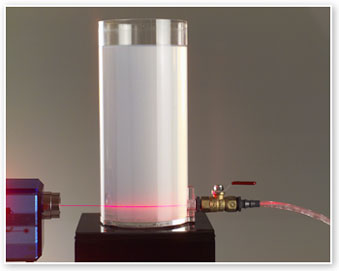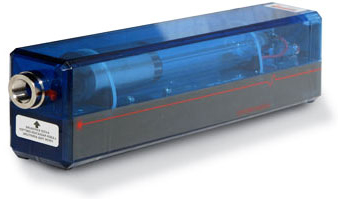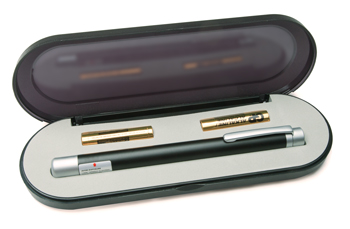|
Tyndall's Historical Experiment - Laser Style Recreate the groundbreaking 1870 demonstration of light guiding in water. Recreate the historical experiment that demonstrated the fundamental concept that led to transmitting light through optical fiber. In 1870, before the skeptical British Royal Society, Irish researcher John Tyndall successfully demonstrated how light could be guided in a stream of falling water. It was the first recorded observation of light being guided by "total internal reflection," and it still is a visually fascinating experiment today. Using modern components, demonstrate this basic principle of light's behavior when it enters a constricting optical channel. Set-up for each experiment requires less than five minutes and costs only a few pennies. ("Just add water!") A visible-light laser with optical power of .5 mW or greater is required for use, but not included. |

Link to suitable lasers
|
LASER CLASSIFICATIONS
All manufacturers of lasers used in the United States, must conform to regulations administered by the Center for Devices and Radiological Health (CDRH), a branch of the U.S. Department of Health and Human Services. CDRH categorizes lasers as follows:
A laser or laser system which does not present a hazard to skin or eyes for any wavelength or exposure time. Exposure varies with wavelength. For ultraviolet, .2 to .4µm exposure is less than from .8 or near IR, the exposure is < 200µw. Consult CDRH regulations for specific information.
Any visible laser with an output less than 1 mW of power. Warning label requirements - yellow caution label stating maximum output of 1 mW. Generally used as classroom lab lasers, supermarket scanners and laser pointers.
Any visible laser with an output over 1 mW of power with a maximum output of 5 mW of power. Warning label requirements - red danger label stating maximum output of 5 mW. Also used as classroom lab lasers, in holography, laser pointers, leveling instruments, measuring devices and alignment equipment.
Any laser with an output over 5 mW of power with a maximum output of 500 mW of power and all invisible lasers with an output up to 400 mW. Warning label requirements - red danger label stating maximum output. These lasers also require a key switch for operation and a 3.5-second delay when the laser is turned on. Used in many of the same applications as the Class IIIa when more power is required.
Any laser with an output over 500 mW of power. Warning label requirements - red danger label stating maximum output. These lasers are primarily used in industrial applications such as tooling, machining, cutting and welding. Most medical laser applications also require these high-powered lasers.




 Industrial Fiber Optics, Inc
Industrial Fiber Optics, Inc

 Mountain Standard Time
Mountain Standard Time